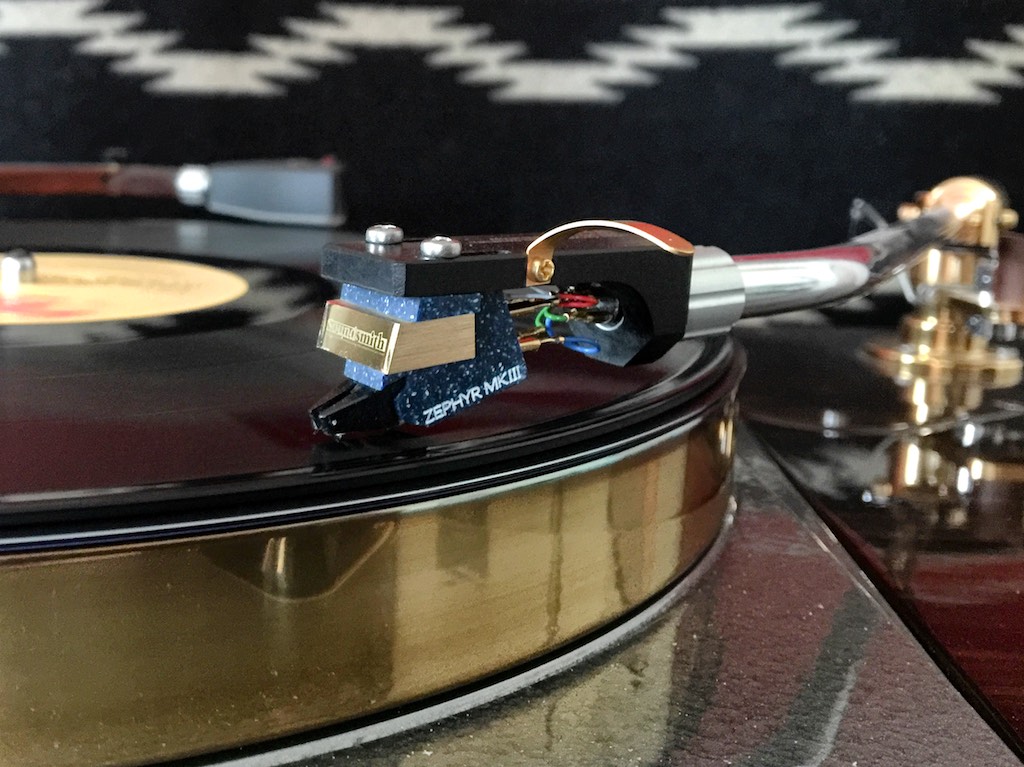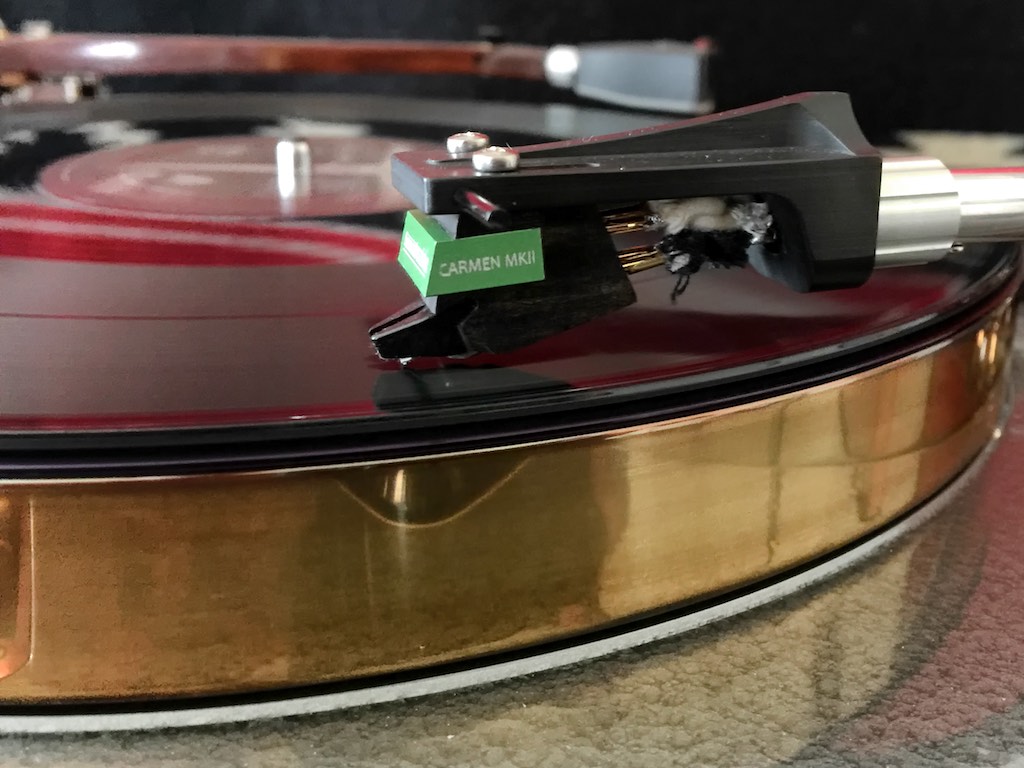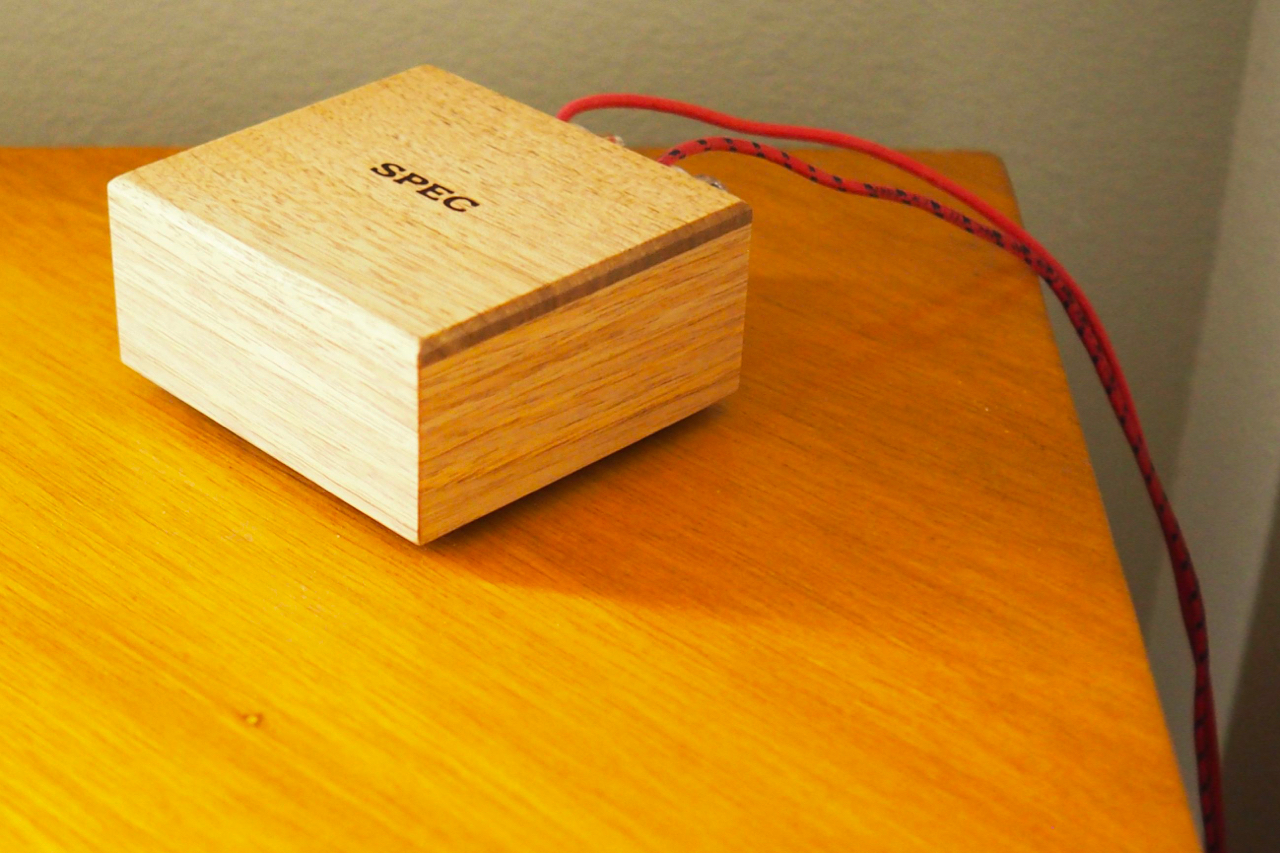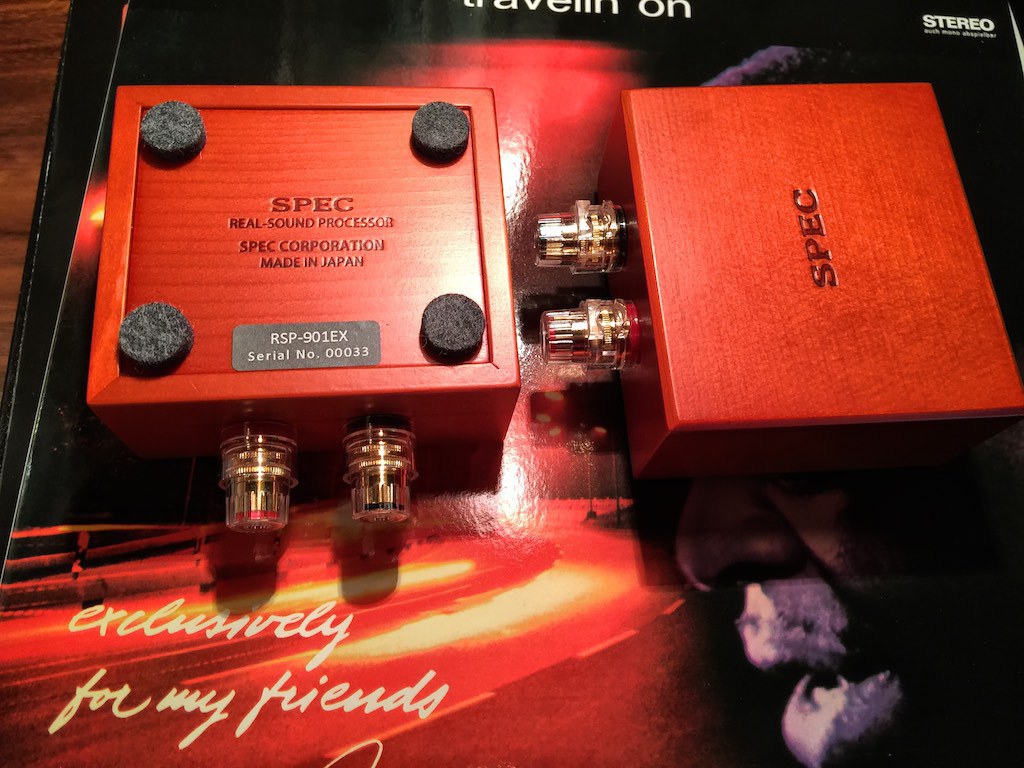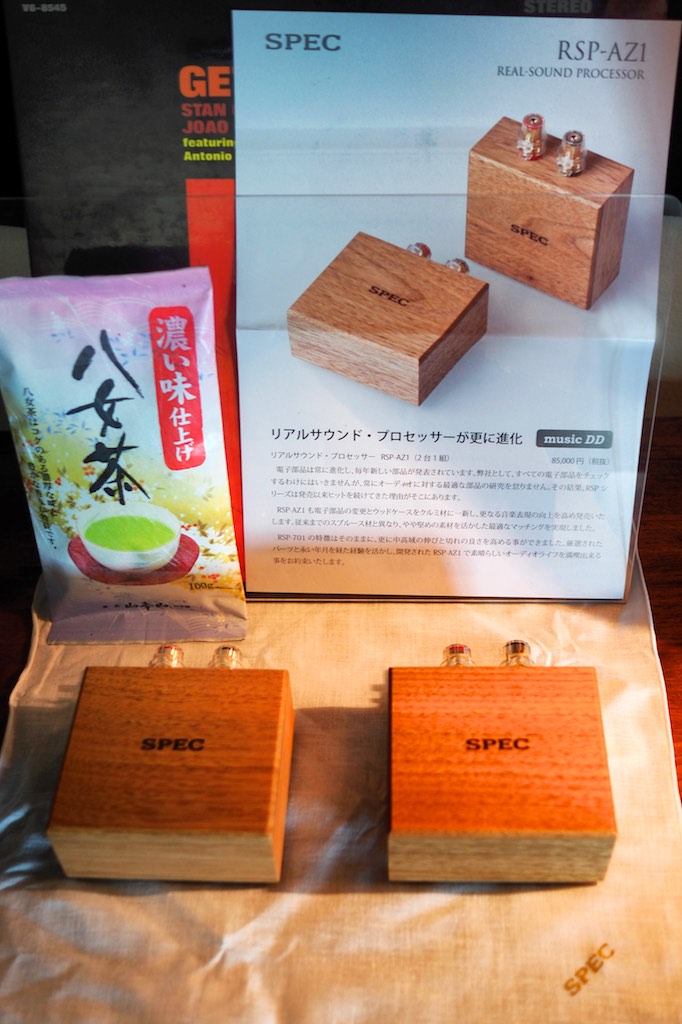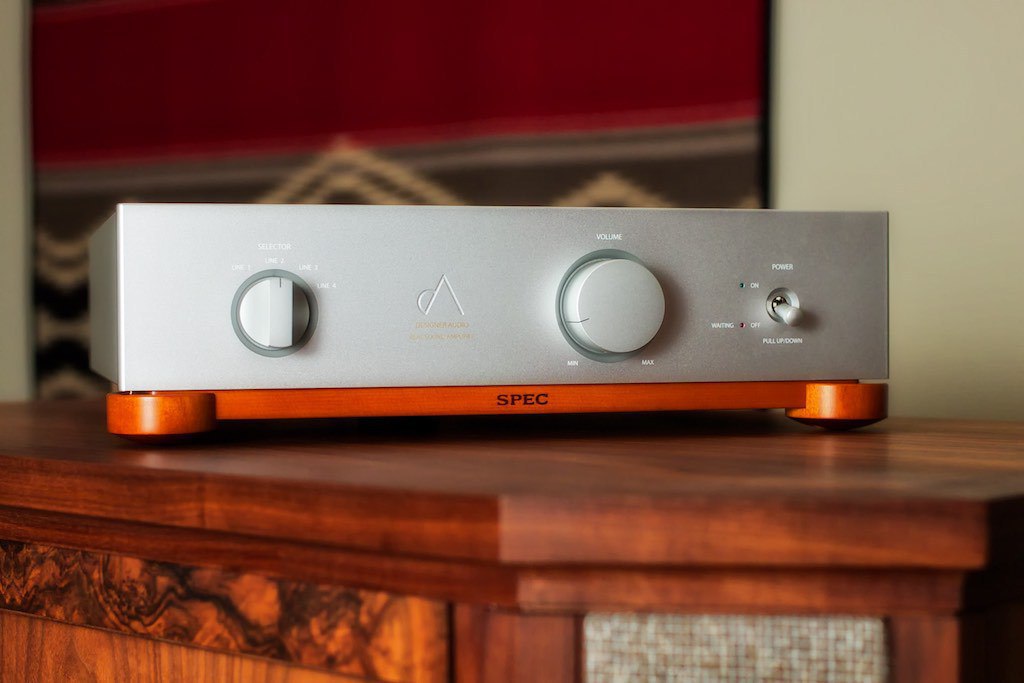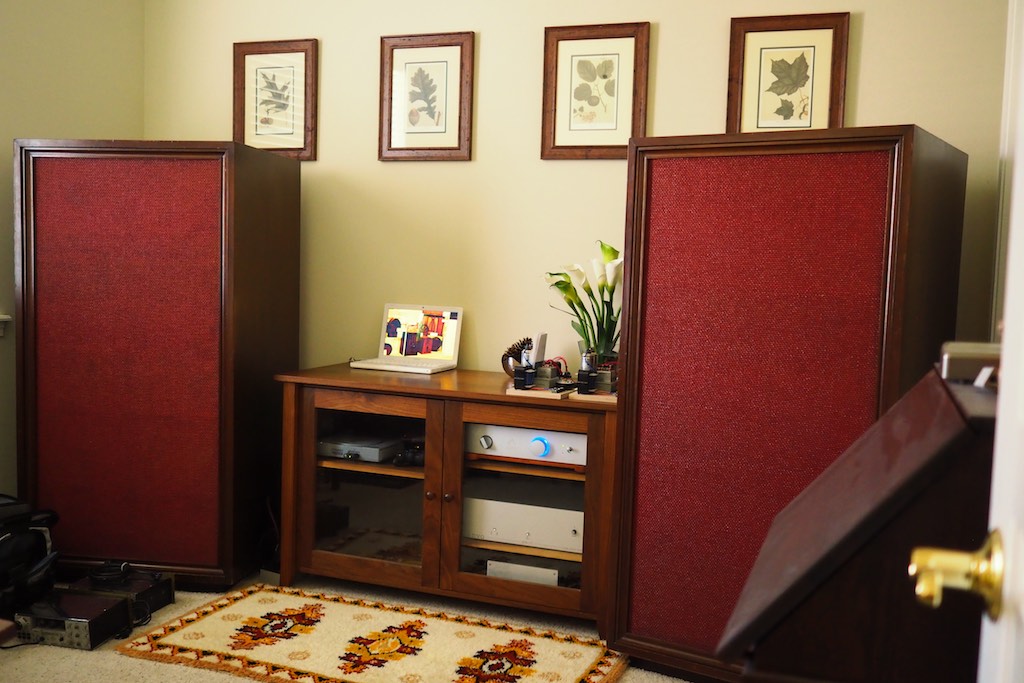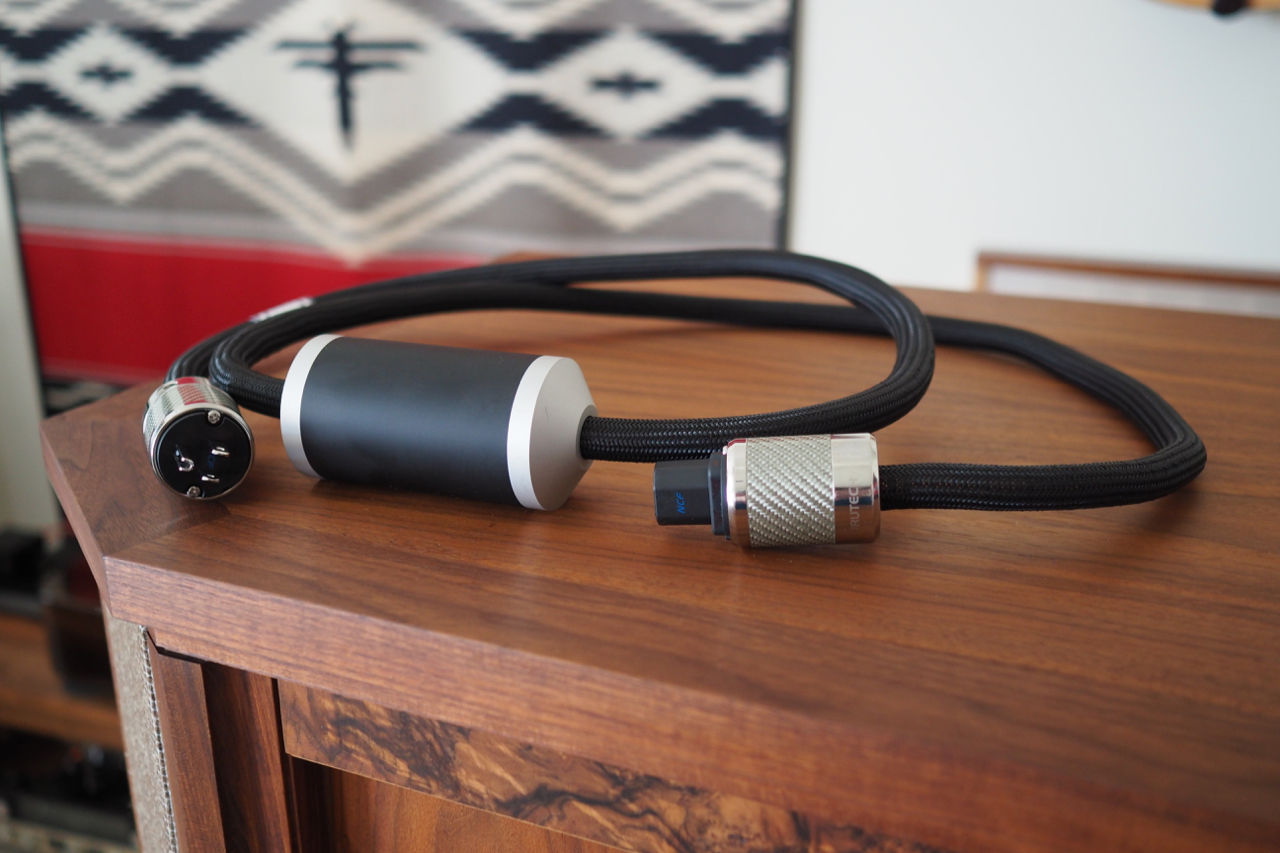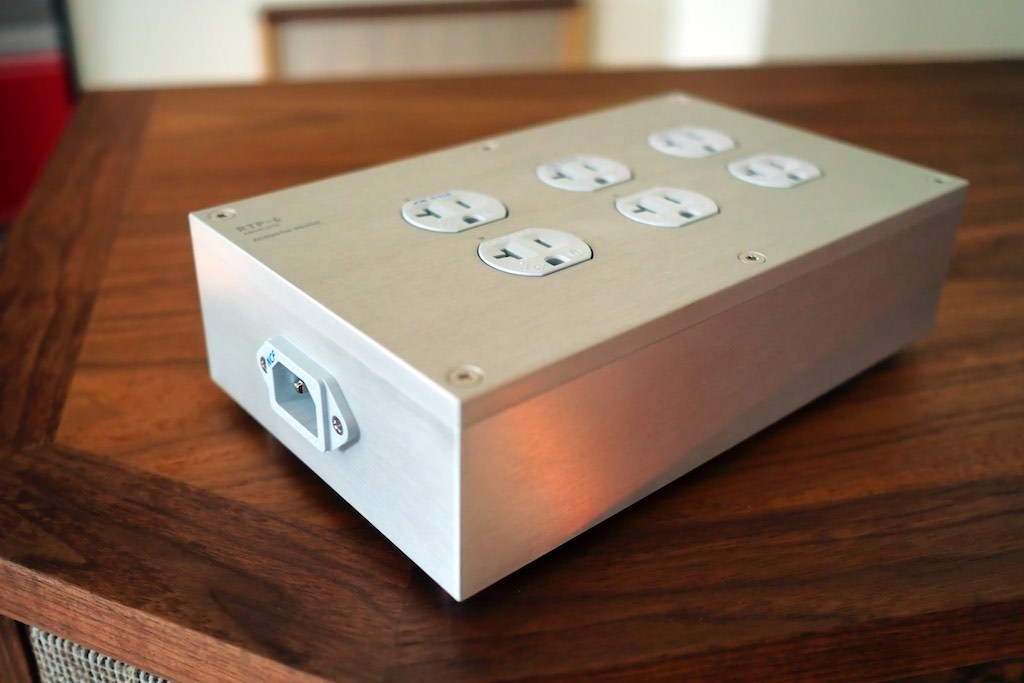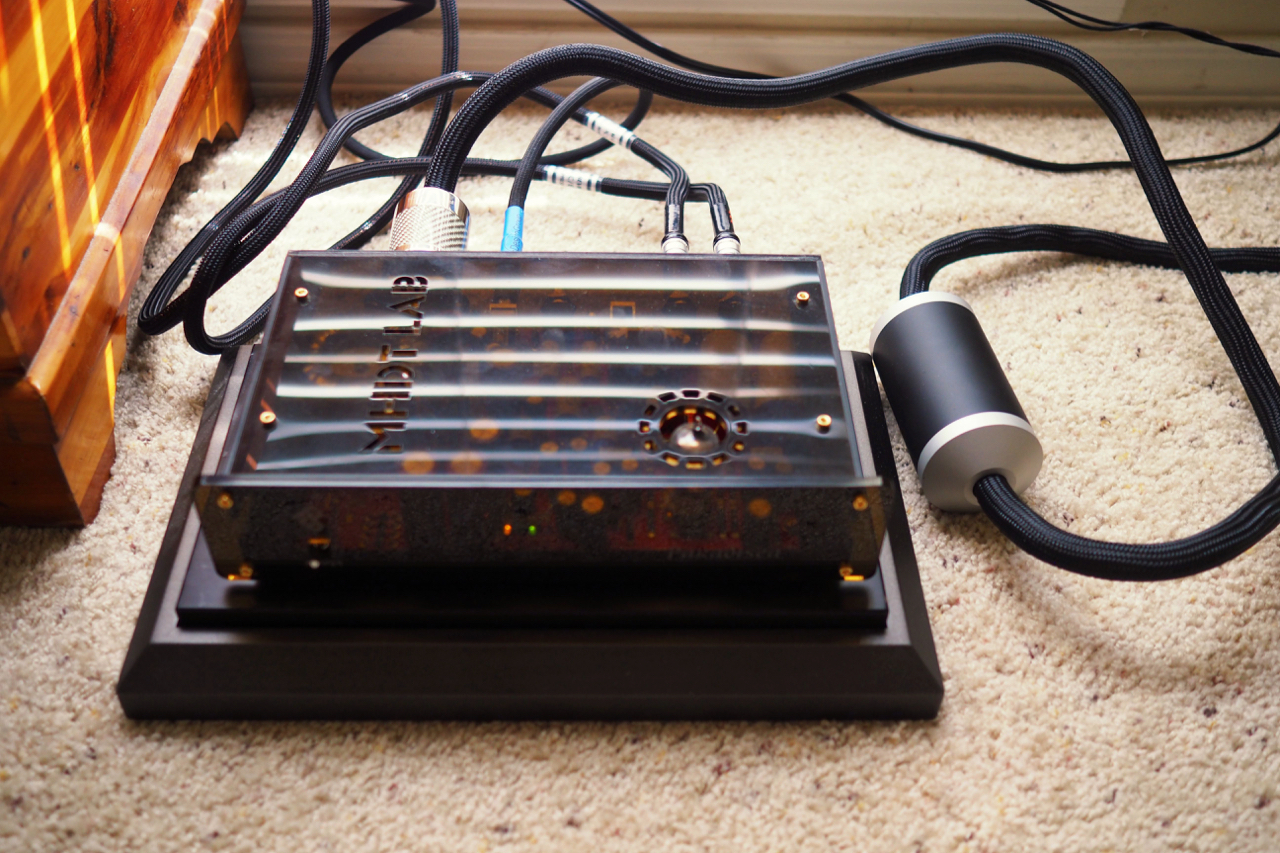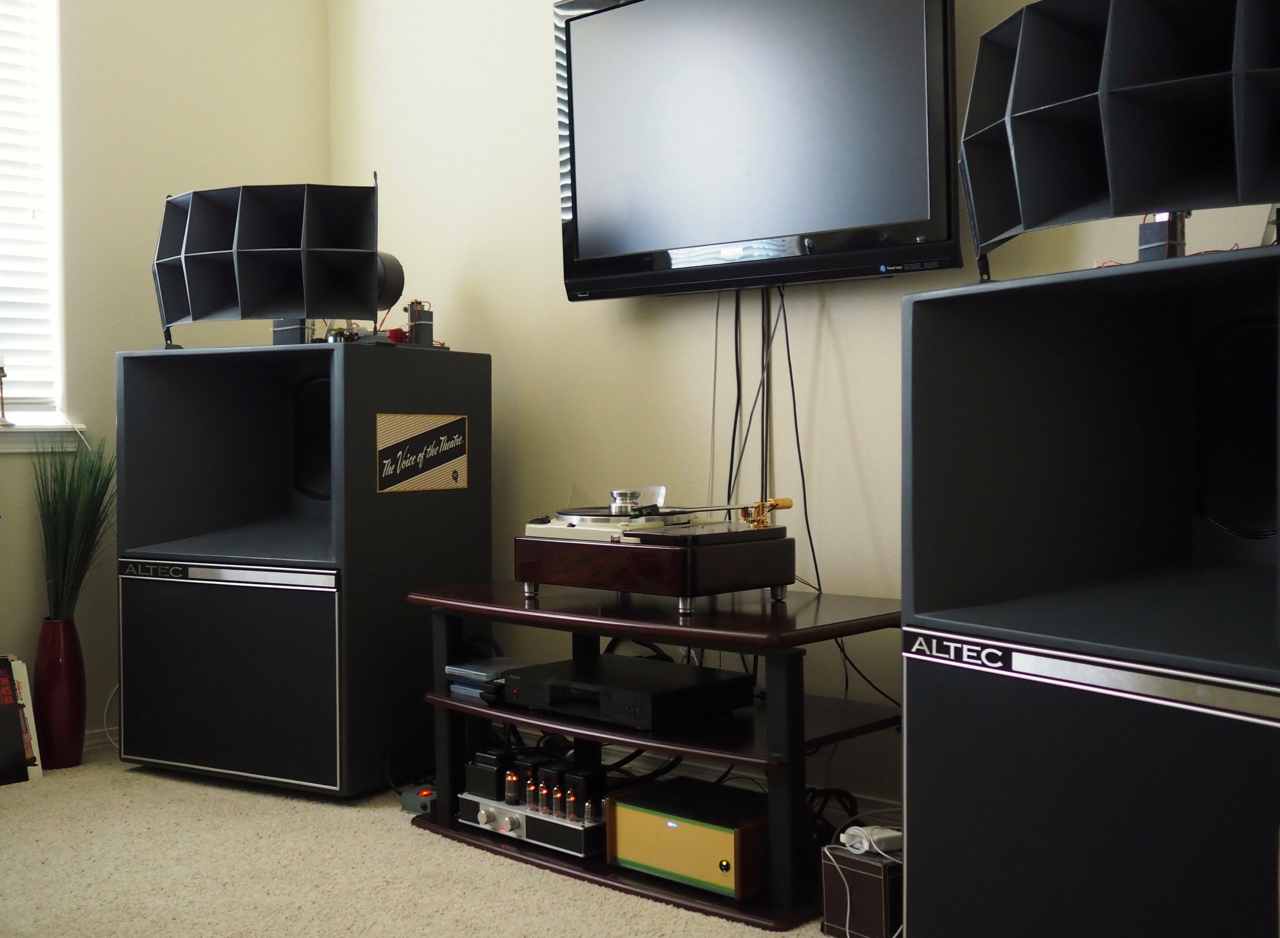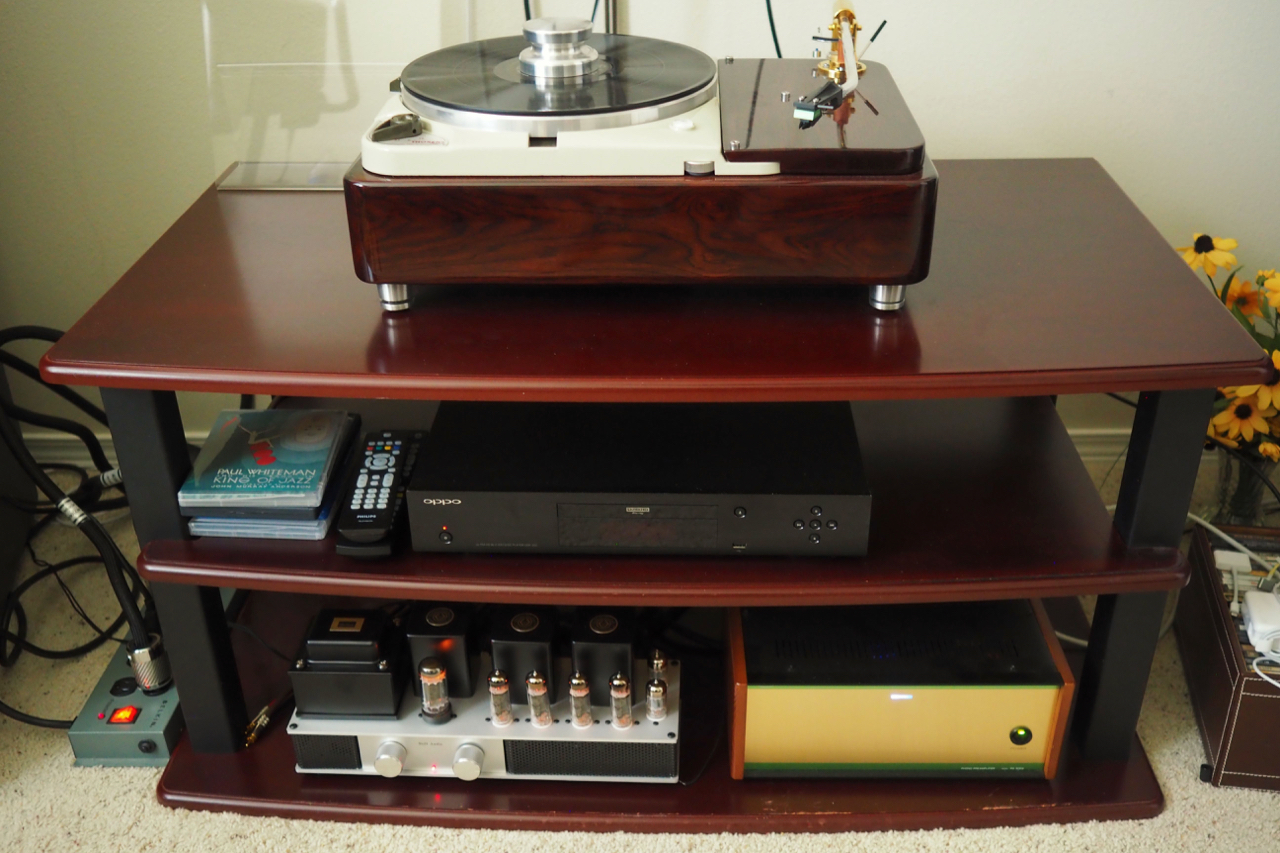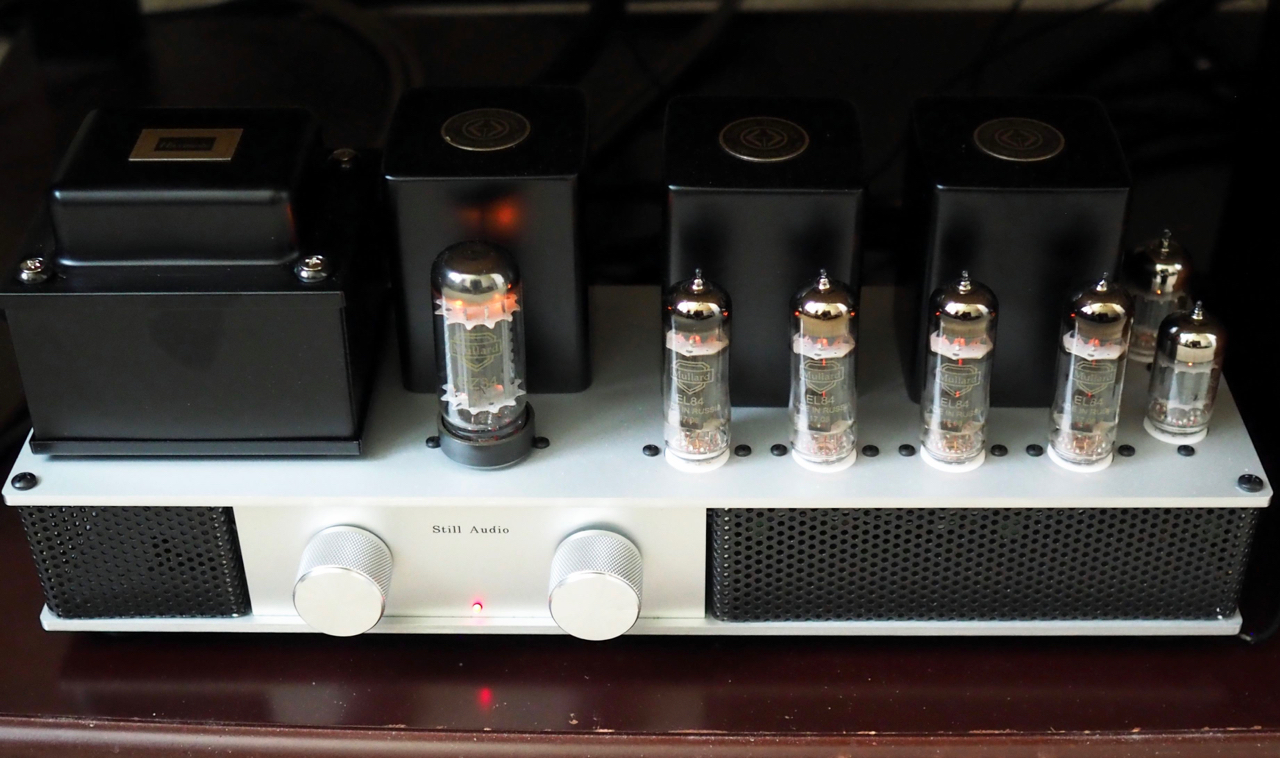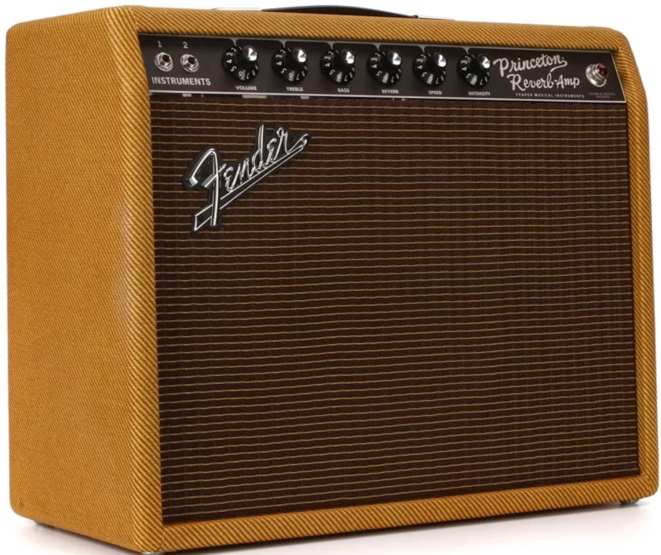I'm working on Part 2 of my Soundsmith review series for Positive Feedback right now, the Zephyr Mk III phonograph cartridge, and hope to have it published in the next few weeks.
In my Part 1 Soundsmith review for Positive Feedback I reviewed the Soundsmith Carmen Mk II phonograph cartridge (HERE).
I found the Carmen Mk II to be a warm, dimensional, and wonderfully musical phonograph cartridge that at $1000 USD is hard to beat for my tastes.
Interestingly, the Carmen Mk II on my Schick 12-inch tonearm matched the performance of my beloved Ortofon SPU Classic GM MkII phono cartridge mounted on the Woody 12.5-inch SPU tonearm in nearly identical musical & sonic fashion, with the added bonus that the Carmen Mk II doesn't require an expensive step-up transformer like the Ortofon does to make it usable in my Westminster-based audio system.
I've never had that improbable result happen before where the combination of two different phonograph cartridges on two different tonearms sounded so similar in musical and sonic terms. It made me smile, and I really enjoyed the result!
My love affair with my vintage Altec Corona 832A loudspeakers continues, and I'm still amazed at how musical they sound tucked into the room corners of my bedroom system. In fact, I'm listening to them now as I write from my living room, and I'm marveling at how effortlessly and naturally they fill the whole house with beautiful music. If I had to move into a smaller apartment where I could only have one pair of loudspeakers, the Corona 832A's are the ones that would go with me.
I haven't touched the Spec RSP-AZ9EX Real Sound Processors (impedance compensators) that Yazaki-san sent me, which he optimized for my 16 Ohm Altec Corona 832A's, since I installed them. They sound great!
I attached them to the binding posts of my Corona's with some vintage Western Electric WE16GA wire, as Yazaki-san would, I suppose.
As I understand it, the Spec RSP-AZ9EX Real Sound Processors are essentially a Zobel network circuit - a series resistor-capacitor network that is connected in parallel with a loudspeaker driver - installed into a beautifully crafted wood chassis incorporating quality binding posts, so you can attach them via lengths of wire to your loudspeakers' binding posts.
The Spec RSP-901EX Real Sound Processors that I've previously reported on (above) were designed with 8 Ohm loudspeakers in mind, but the AZ9EX's that Yazaki-san sent me were optimized for the 16 Ohm load of the Altec Corona 832A loudspeakers.
When you optimize an impedance compensation circuit for a particular loudspeaker, you have to take into account the DC resistance and voice coil inductance of the driver in order to determine the values the resistor and capacitor used in the impedance compensation circuit. You can get an idea of how this works by experimenting with values in the Zobel circuit calculator HERE.
What quickly becomes apparent is that the values of the capacitors used for 8 Ohm drivers and 16 Ohm drivers would be very different, so you couldn't expect the Spec RSP-901EX Real Sound Processors (for 8 Ohms) to be a happy match for 16 Ohm Altec's like my Corona's (or my A5's or A7's).
I've got some questions into Yazaki-san requesting he expand upon his thought process for optimizing the AZ9EX's for a 16 Ohm load like my Altec's, whether or not the new Spec RSP-AZ9EX Real Sound Processors will be available in both 16 Ohm and 8 Ohm versions, pricing, etc. Knowing Yazaki-san it will be a very interesting read!
Speaking of Spec, I've been using the superb Spec RSA-M3 EX Real Sound Integrated Amplifier with my vintage Altec A7 Voice of the Theatre loudspeakers that were made by Altec for Leopold Stokowski's home use when he lived in New York, which are essentially full-sized Altec A7 Voice of the Theatre loudspeakers wrapped in big custom cabinets to be more attractive for home use.
The Spec RSA-M3 EX Real Sound Integrated Amplifier is a superb match to the Altec's, and has inspired more than one visiting listener as to the potential of vintage Altec loudspeakers.
When I get started on the Duelund-Altec crossover project with the vintage "Stokowski" Altec A7's my plan is to migrate the Spec RSA-M3 EX Real Sound Integrated Amplifier to my Altec 832A Corona-based system, which I suspect will really complement the Corona's, so I am really looking forward to hearing that Spec & Altec 832A Corona combination - more to come!
I've got the new exotic and expensive Acoustic Revive Absolute Power Cords and RCA Absolute FM Interconnects getting some run-in time in various systems, and they're sounding really nice.
I've got an Acoustic Revive Absolute Power Cord connecting the Acoustic Revive RTP-6 Absolute NCF Power Distributor to my wall AC, which powers my entire Westminster-based system.
The Absolute Power Cord is sounding mighty good, and surprisingly different from the Acoustic Revive Power Reference TripleC NCF AC power cords I reviewed HERE, which are essentially the same power cords with the exception of the addition of the Degawa method MD unit around the midpoint of the power cord.
I've got an Absolute Power Cord and pair of RCA Absolute FM Interconnects getting some run-in time in my vintage Altec 832A Corona-based system on the Mhdt Paradisea+ USB DAC. I know, it's a crazy combination from a price perspective, but it sure is a great way to enjoy the Absolute Power Cord and pair of RCA Absolute FM Interconnects while they're getting some run-in time, and do they ever make the Corona-based system sound great!
I've also got an Absolute Power Cord and pair of RCA Absolute FM Interconnects getting some run-in time in my Altec A5 Voice of the Theatre based audio-visual system.
The Absolute Power Cord is powering the Still Audio EL84 integrated amplifier to excellent effect, and with the RCA Absolute FM Interconnects connecting the Leben RS-30EQ phono equalizer to the Still Audio EL84 integrated amplifier.
Speaking of the Still Audio EL84, as soon as I'm finished writing up the Soundsmith Zephyr Mk III review for Positive Feedback, I'll be starting on the Still Audio EL84 review for Positive Feedback.
As you would expect, the 10 watt per channel Still Audio EL84 has more than enough power to drive the Altec A5 Voice of the Theatre loudspeakers to live-like levels.
The Still Audio EL84 integrated amplifier is warmer and richer sounding than the Leben CS-600 integrated amplifier that normally resides in the system, which is not something you would normally associate with EL84 amplifiers.
The Still Audio EL84 integrated amplifier is not your typical EL84 amplifier which is often built to be a budget unit, as the Still Audio EL84 is more of a tour de force example of how good an EL84 based amplifier can be. More to come!
The First Watt SIT-3 stereo amplifier review is now live at Positive Feedback HERE. After the conclusion of the review Nelson sent me an email saying:
“Since you are tuned into tubes, perhaps you would like to hear a little preamp I cobbled together using the Korg (Noritake) Nutube, which is a tiny little pc mount triode. It does a very good job with the 2nd harmonic and has cute little glowing cathodes.”
I let Nelson know I would enjoy giving his Nutube preamp a listen, so stay tuned on that topic as I find out more about timing and such. More to come!
I've been using a Henriksen Jazz Amp for a number of years, but I decided to order a Fender '65 Princeton Reverb vacuum tube guitar amp from Sweetwater to use with my Collings Eastside LC Deluxe jazz guitar.
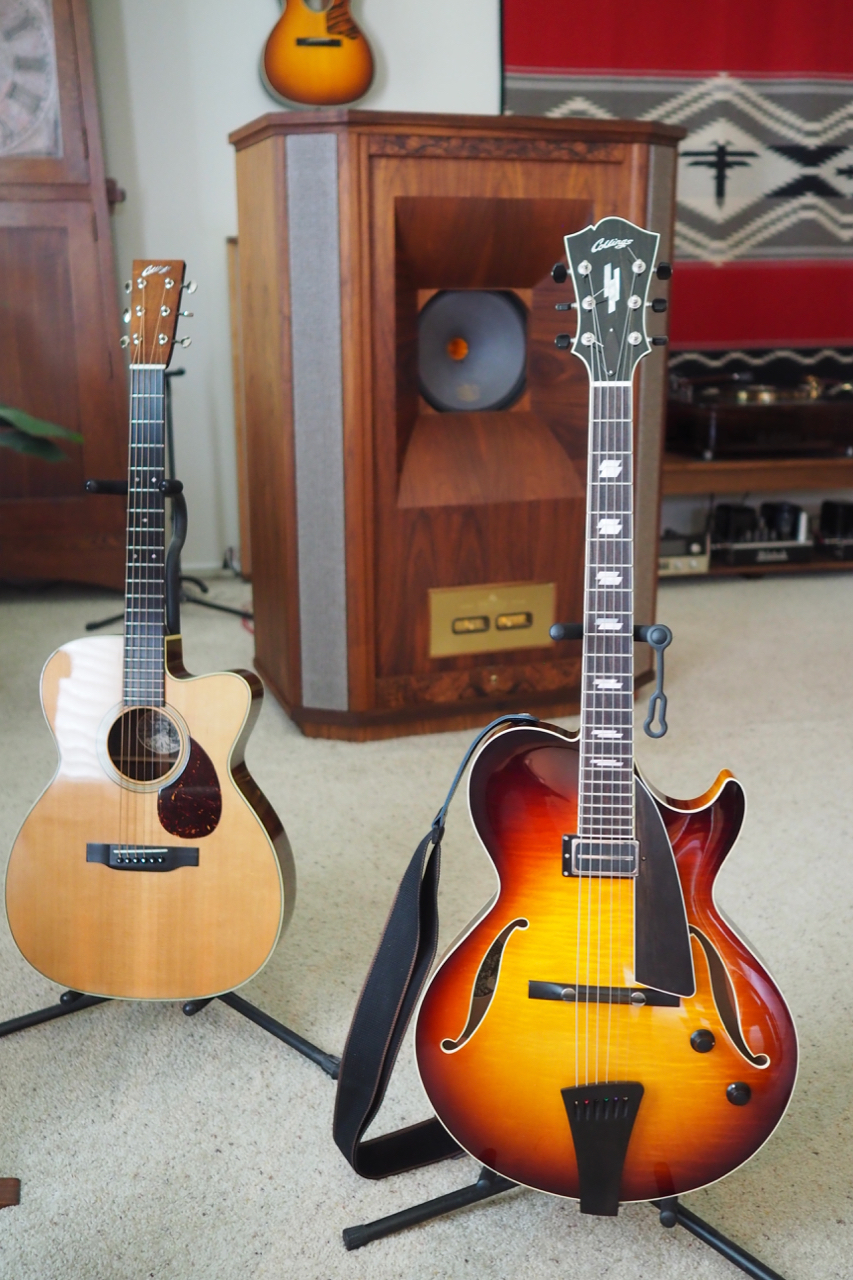
Left: Collings OM2C acoustic guitar for fingerstyle playing. Right: Collings Eastside LC Deluxe jazz guitar.
The "Fender '65 Princeton Reverb 15-watt 1x12" Tube Combo Amp in Lacquered Tweed" is a special edition that Fender makes for Sweetwater, and in Sweetwater's words:
"Fender used the beloved '65 Princeton Reverb as a starting point, then they added a beautiful and vintage-style lacquered tweed covering that will transport you back to the great Fenders of the 1950s. The speaker has been beefed up to a 12" Eminence Cannabis Rex for its blend of smoothness and sparkle."
The main difference between a standard Fender '65 Reverb and this amp is that the standard version uses a 10-inch speaker and this one uses the 12-inch Eminence Cannabis Rex speaker, and it's wrapped up in lacquered tweed for a vintage look.
One of the things I like about the Fender '65 Princeton Reverb is its tube amp, which instead of having solid-state rectification like some of the other Fender guitar amps, it has vacuum tube rectification which almost always sounds better to my ears. I suppose that's my audio preferences coming through, but I think it matters.
The tube complement is three 12AX7's and one 12AT7 in the preamp section, a pair of 6V6's for power tubes, and a 5AR4 rectifier.
Ok, that's it for now. As always, thanks for stopping by, and may the tone be with you!




